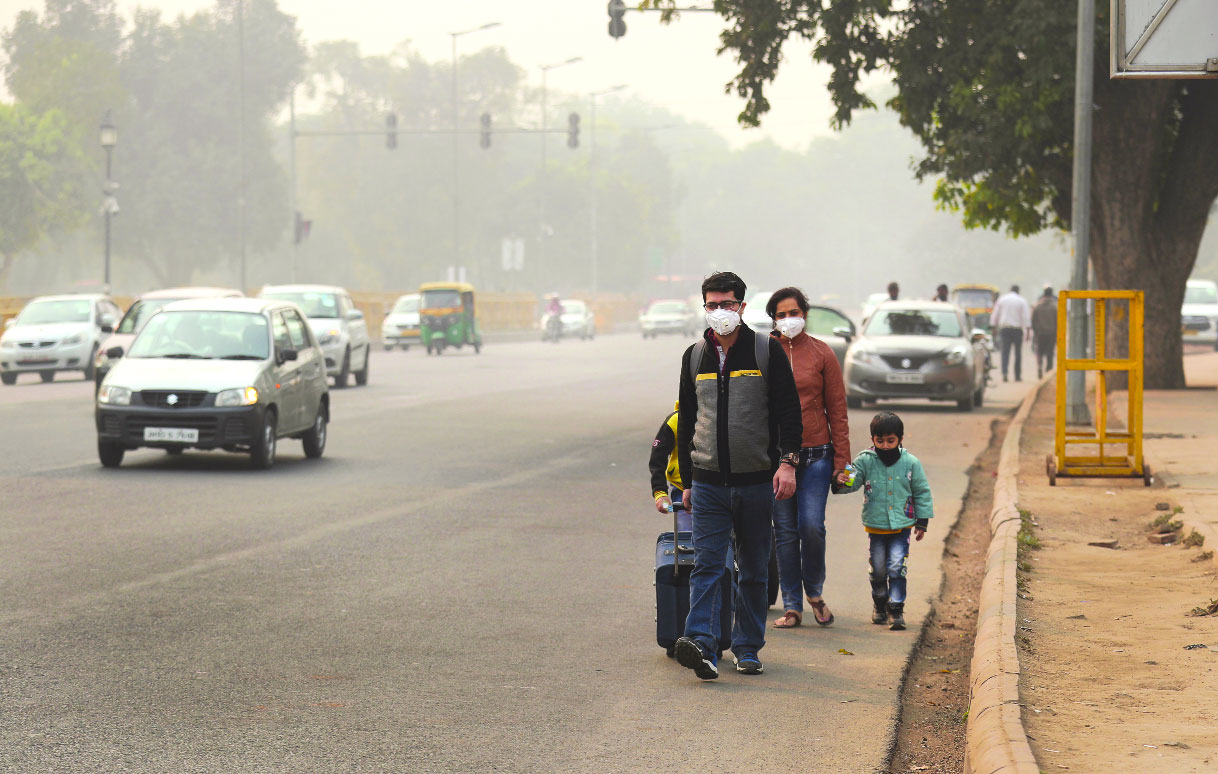Delhi’s air quality improved significantly from “severe” to “very poor” on Monday as stubble burning cases in Capital’s neighborhood was recorded “marginal” down. Its contribution in Delhi’s air pollution came down from 36 per cent to 7 per cent on the National Air Quality Index (NAQI) graph.
The week started on a good note in terms of air quality. System of Air Quality and Weather Forecasting And Research (SAFAR) in its air quality forecast said, “Air quality is likely to improve further by Tuesday but will remain in very poor category. The Particulate Matters (PMs) levels are declining and stubble related impact continue to remain nominal due to slow transport winds.”
The SAFAR said the trend on stubble burning is fluctuating between 7 per cent and 10 per cent and will remain like this till November 15. Incidentally, on October 27, stubble fire’s share in Delhi’s pollution was 36 per cent, which was the highest of the season. Satellite pictures on SAFAR’s website explained how winds played crucial role in transporting half-burnt particles in Delhi air.
Stubble burning data pointed out that the biomass burning was the highest contributor to air pollution since October 11. The SAFAR mentioned that the moderate north-westerly wind with abysmally slow speed of five kilometre an hour was the reason behind escalation of pollutants in the air.
“Surface wind at 18 km per hour, inversion layer height, favourable to moderate stagnation are the factors for better dispersion of pollutants,” SAFAR mentioned in its report. “Shallow boundary layer continued and local weather are the most dominant factors responsible for pollution,” the Center-run pollution watch body said.
The report also analysed the trends of different factors causing pollution since 2010 and it said transport emission in the national Capital has increased significantly at 41 per cent in the last eight years. The residential bio-fuel emission declined significantly in Delhi to 64 per cent since 2010, the report said.
The SAFAR issued a health advisory due to increased pollution levels in Delhi, urging people with heart or lung disease, older adults and children to avoid prolonged or heavy exertion. It also recommended people to go for shorter walks instead of jogging, keeping windows closed and wearing masks while stepping outside.
It may be recalled, Union Environment Minister Dr Harsh Vardhan had said the Centre has decided to initiate criminal prosecution against agencies which do not comply with the directives to check air pollution.
Meanwhile on Monday, the air pollution levels in Delhi’s air were recorded 402 and 268 microgram per cubic. Importantly, the level of PM 10 is still high on NAAQI, however the overall Average Air Quality Index was at 399.
Five areas which recorded severe pollution include Anand Vihar, Dwarka Sector 8, Narela, Punbjabi Bagh and Rohini.
Ghaziabad, Faridabad, Greater Noida and Noida recorded severe air quality while Gurgaon showed improvement in air quality as it stood in moderate category, according to the CPCB.
An AQI between 0 and 50 is considered good, 51 and 100 satisfactory, 101 and 200 moderate, 201 and 300 poor, 301 and 400 very poor, and 401 and 500 severe.


























